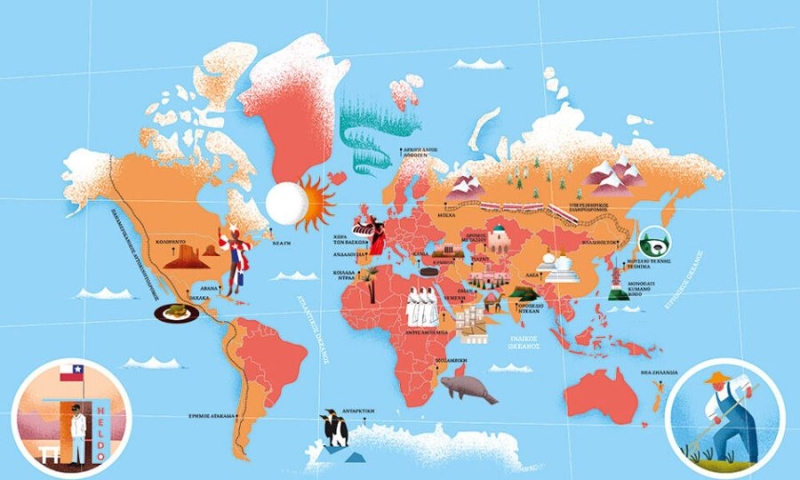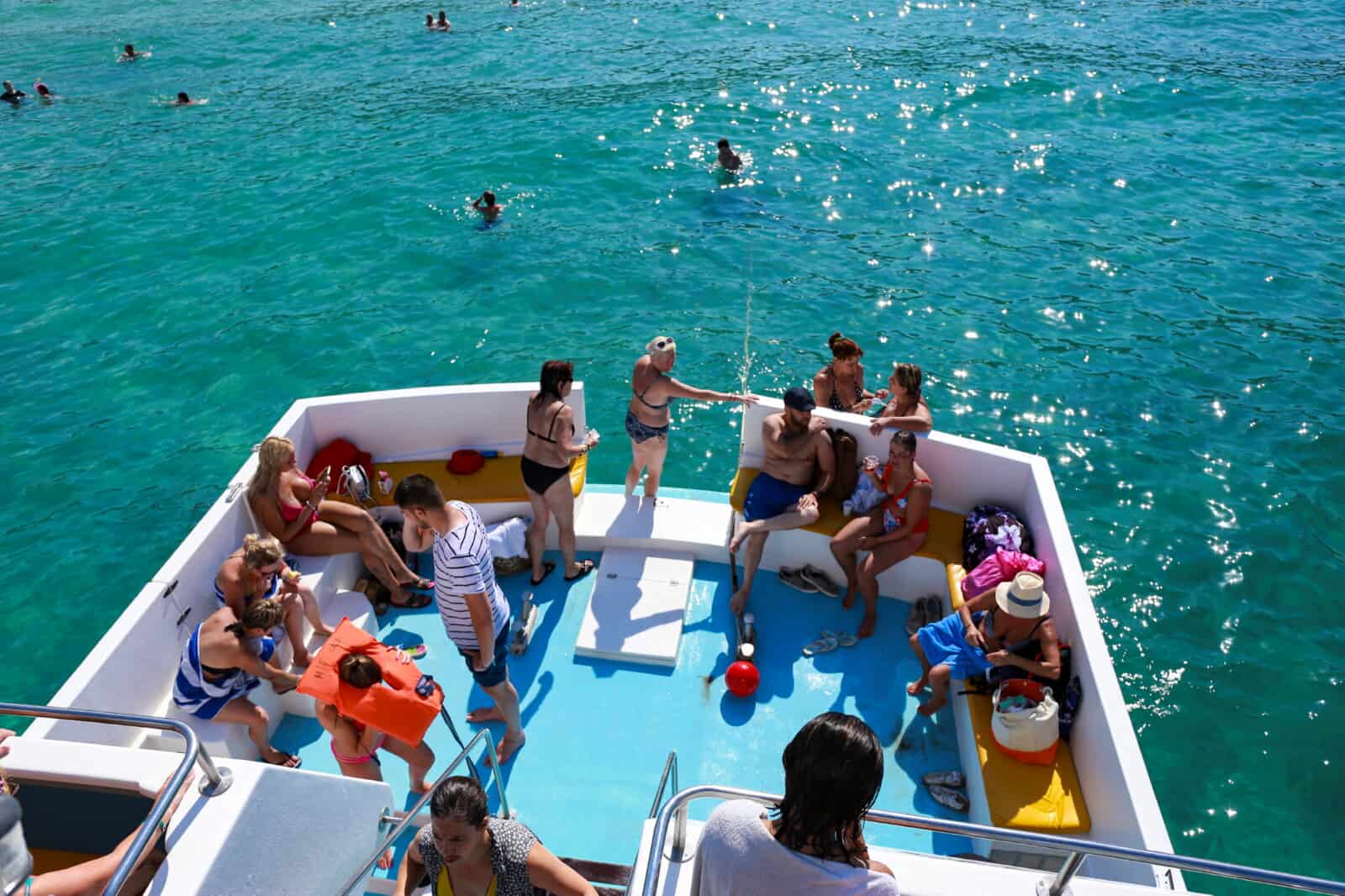Five distinguished professionals, experts in their field, recommend 25 top travel experiences on six continents. 25 World Travel Experiences Worth Living

Illustration: PHILIPPOS AVRAMIDIS
Research Editors: Mario Mercado, Alexis Sottile
Copy Editors: Diego Hadis, James Camp, Polly Watson
Photo editing:Katie Dunn
Ashlea Halpern is a Contributing Editor at T Magazine of the New York Times.
Editor of Greek edition photographic material: Marika Tsouderou
< strong>Attribution of texts: Nina Zve
One morning last July, a panel of five distinguished professionals from various fields—writers Pico Iyer and Aatish Taseer, architect Toshiko Mori, chef and food scientist David Zilber, and landscape photographer Victoria Sambunaris—had a Zoom appointment to discuss how a 'travel experience' is defined and how some stand out over others. To start the discussion, everyone had pre-selected at least 10 propositions.
Their job was to reduce the options from 55 to 25.
The participants were all polite and listened attentively to anyone they considered an expert in a particular field: In good restaurants, Zilber, who has worked at Noma and co-authored the famous Copenhagen restaurant's 2018 book on fermentation. In the incredible topography of the American West, Sambunaris, who drives her car around the country for several months a year to capture landscapes and images. Furthermore, they easily sacrificed favorite choices, especially if they felt they were too obvious (Petra, Machu Picchu), too unfamiliar (Alvar Aalto's experimental summer house Muuratsalo in Säynätsalo, Finland – Mori's choice), too personal (the drive along the Karakoram Highway that connects Pakistan to China – something Taseer heard from his father) or highly commercialized (a Nile cruise with good hotel stays). As Iyer said, “hotels offer comfort and luxury, but they don't touch my soul.”
Some participants recalled suggestions for experiences they hadn't experienced themselves, even though they'd dreamed about it for years, such as a hike in Japan's remote Yakushima Island National Park, which inspired the epic film Princess Mononoke (1997). by Hayao Miyazaki. (“I don't know if going there will destroy or intensify my fantasy of the place,” Mori said.) Still others chose to support choices they couldn't vouch for with personal testimonies, proving just how powerful it can be. to become the collective imagination. But at the same time, not all of the experiences chosen are rare or hard to reach: sometimes all we have to do is open our eyes (or mind) to the magic a place has to offer.
Another consideration was safety, with some panelists concluding that what might make a destination “dangerous” is largely, but not entirely, defined by one's personal history and worldview. Others wanted to be sure to encourage readers to do their own research before deciding whether to set out for a particular place, as conditions and circumstances are constantly changing. At the time of writing, the US State Department had issued the highest warning – Level 4: Do Not Travel – for four of the destinations on the list below, while some were in the category of Level 3: Reconsider whether you should travel . However, most of the participants agreed to include sites that may raise political, ethical and ideological concerns. “Countries that are plagued by wars and places that are in conflict right now, they haven't always been that way and they won't be that way forever,” Zilber said. “I don't think the current state of a destination should prevent it from being included.” (In the months between the commission's meeting – on July 20, 2022 – and the publication of this list, the world has continued to change: Russia's war with Ukraine has intensified, Iran has been engulfed in protests following the arrest and death of Mahsa Amini, the young woman accused by Ethon Police of violating the mandatory hijab law, while Ethiopia and the Tigray Defense Forces, a paramilitary rebel group, agreed to a ceasefire after two years of devastating civil war.)< /p>
The final 25ADA, which is divided geographically rather than ranked, includes experiences in art and architecture, gastronomy, history and religion. There's something for every type of traveler – even those who never get out of their armchairs. — Ashlea Halpern
Ashlea Halpern: I'm curious to know how each of you defined the word “experience” when you sat down to compile the list.
Pico Iyer:I asked myself which are the moments that remain after 30 years of travel, which are the most touching and which are the most unexpected. I wouldn't include the Taj Mahal under the moonlight, because most readers already know that. So I wanted something a bit different, but something that has stayed with me after all this time.
Victoria Sambunaris:I defined “experience” as travel, because that's what I do in my life. I travel for many months at a time and feel lost in the landscapes. I interact with people and learn about local culture, history, ecology and geography. I never organize my stay in advance, I live spontaneously, I camp under the stars. There is a great sense of adventure to it all.
Aatish Taseer:In general, I am drawn to human creations, cultural and cultural elements. When a physical experience gives me an unexpected feeling of wonder, it's something special and special. We all travel with an image of what we will see. No one goes anywhere blindly. But there are times when there is the element of surprise. This is what I looked for.
David Zilber:The word “experience” has a very broad meaning. Everything is an experience. And watching Netflix all day because you're sick is an experience, even though I can't remember what I'm watching when I'm in bed. However, I distinctly remember the 45-minute drive into the mountains of Crete to eat at a biodynamic farm, where the owner's children ran and played. And I'll probably remember it even when I'm 75.
Toshiko Mori: I thought about natural sights, because we forget how small we are, and ways to observe animals in their environment. without human intervention.
With Instagram, everyone uploads awesome photos. The locations depicted become widely known, are poles of attraction and the result is disastrous for the environment. I also suggested cultures and destinations that have experienced problems in the past – such as Kurdistan after the departure of ISIS. It is very important to have these kinds of experiences, because we are terribly privileged and protected. I didn't want us to forget places that really need attention.
A.H.: Let's start with Europe. Spain was the country with the most candidate destinations for the list – four different committee members suggested four different places.




